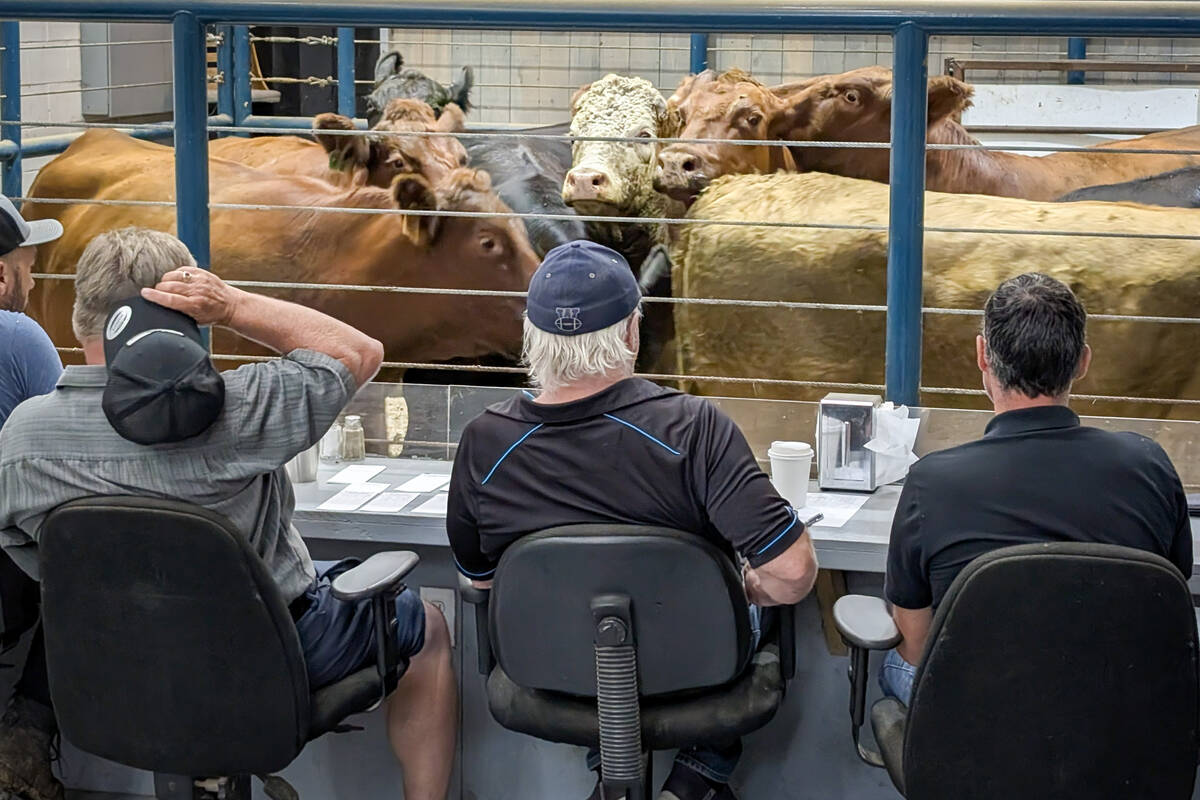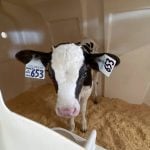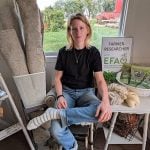Housing new dairy cows in pairs rather than individual pens could improve their ability to learn new feeding and milking technologies, a new B.C. study suggests.
The study by Rebecca Meagher, a postdoctoral fellow at the University of British Columbia, shows dairy calves become better at learning by way of a “buddy system” — and suggests “certain learning difficulties” may be associated with the usual industry practice of individual housing.
“Pairing calves seems to change the way these animals are able to process information,” said Dan Weary, a professor in UBC’s animal welfare program, said in a release Wednesday. “We recommend that farmers use some form of social housing for their calves during the milk feeding period.”
Read Also

Klassen: Weaker fed market weighs on feeder cattle prices
For the week ending November 8, Western Canadian feeder cattle markets traded $10-$20/cwt below values from seven days earlier. Some…
As cattle begin to interact with robotic milkers, automated feeding and other technologies of the modern dairy barn, slow adaptation can be “frustrating” for not only the farmer but the cow also, UBC said.
“Trouble adjusting to changes in routine and environment can cause problems for farmers and animals,” said Weary, a corresponding author in the new study. The switch from an individual pen to a paired one, he added, can be as simple as removing a partition.
“Able to habituate”
The study at UBC’s Dairy Education and Research Centre in Agassiz involved cognitive tests on two groups of Holstein calves. In the first test, a “novel object” — a red plastic bin — was introduced into the pen. All calves showed interest, as expected, but after “multiple encounters” with the bin, individually-housed calves still responded as if each was their first exposure. Paired calves, however, began to ignore the bin.
The test, Weary said, suggests individual rearing can make calves “more sensitive to novelty, and thus less able to habituate to changes in their environment… This could make it more difficult for a farm animal to be trained or to do something as simple as walk down a path and not be overwhelmed by a bright light or a new noise.”
In the second test, the calves were taught to approach a black bottle full of milk and avoid an empty white bottle. After the calves learned to visit the black bottle, the researchers switched the rules to determine how well the calves were able to adjust.
“At first, both the individually housed and pair-housed calves initially struggled with the task, but after a few training sessions the pair-housed calves began approaching the correct bottle while the individually housed calves persisted with the old strategy, visiting the incorrect bottle more often,” Meagher said.
The same kind of “learning deficit,” she said, has been found before in other lab animals housed individually.
Farmers often house calves in individual pens as a way to cut the spread of disease, Weary said, but “the risk of one animal getting sick and affecting the others is real when you’re talking about large groups… not with smaller groups like two or three.”
Meagher’s study was published Wednesday in PLOS One, an open-access, multi-discipline, peer-reviewed, San Francisco-based online journal focused on “primary” research. — AGCanada.com Network














